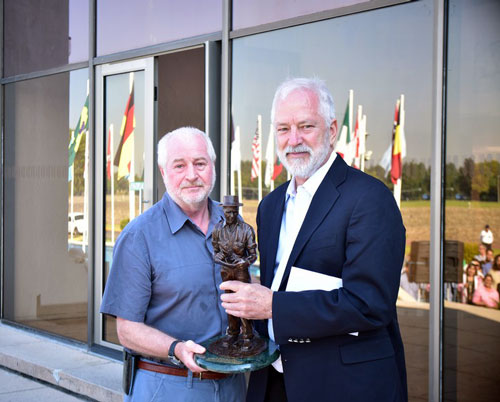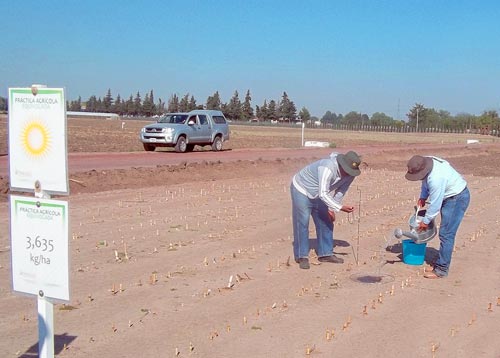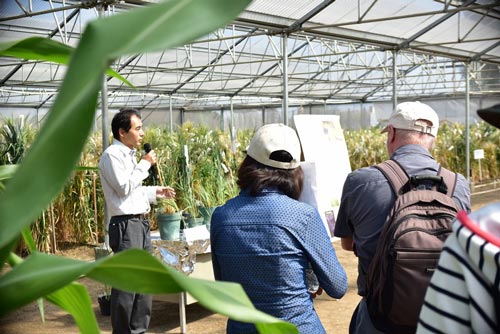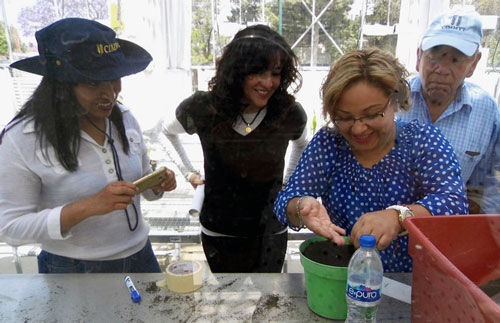
Comprising interactive presentations in English and Spanish on diverse aspects of the Center’s work, CIMMYT Day at El Batán on 10 April allowed more than 250 staff members to learn more about the science and get a first-hand understanding of CIMMYT activities and impact.
Thomas Lumpkin, CIMMYT director general, and John Snape, Chair of the Board of Trustees, welcomed participants. Snape presented Lumpkin, who will leave CIMMYT in June, with a miniature statue of Dr. Norman Borlaug, in honor of his humanitarian spirit and commitment to developing world farmers.

The tours began with wheat physiologist Matthew Reynolds explaining how this specialty contributes to improve wheat, elucidating wheat production environments and how they affect wheat, sources of useful new traits and the challenges of measuring and working with these traits. At the conservation agriculture experiment, Nele Verhulst, strategic research coordinator for this discipline in Latin America, astounded visitors by describing the yield increases possible through proper application of conservation agriculture’s three principles: reduced tillage, keeping crop residues on the soil, and careful use of crop rotations. In particular, the removal vs the retention of residues under zero tillage provided dramatic differences of 5.7 vs 7.9 tons per hectare (t/ha), respectively, with good rainfall, and of 3.6 vs 7.4 t/ha in drought years, due to the superior capture and retention of moisture on untilled soils with residues.

Jelle Van Loon, leader of machinery innovation and smart mechanization, demonstrated implements specially adapted for conservation agriculture, explaining that all are multi-use and multi-crop, to be most useful to farmers. Biosciences Greenhouse Laboratory Manager Ulises Gaona Ramírez demonstrated how to “separate the wheat from the chaff” using various methods, and gave everyone the opportunity to plant their very own wheat plant, which they were allowed to take home as a living souvenir. From there, participants visited the wheat and maize quality laboratories. Carlos Guzmán, head of the wheat quality laboratory, and Hector González, principal research assistant, explained the characteristics of different types of wheat used to create different food products, while Natalia Palacios, maize nutrition quality specialist, discussed the use of different maize varieties to make tortillas, the staple food of Mexico.

The day finished with a visit to the CIMMYT Germplasm Bank, during with Denise Costich, head of the maize germplasm bank, and Thomas Payne, head of the wheat germplasm bank, talked about their respective areas and led tours of the actual seed collections inside the Bank chamber, with support for Spanish-speaking visitors from Bibiana Espinosa, Paulina González and Martín Rodríguez.
 Innovations
Innovations 
